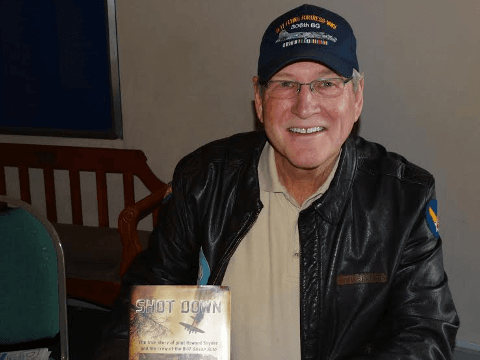Purchase SHOT DOWN! through ...
For International orders order from Book Depository
BETTER YET …
Order your Personalized autographed hardcover copy directly from Steve through PayPal.
Who I am
I was born in Pasadena, California and went through the San Marino school system. First attending the University of California at Santa Barbara, I then transferred to UCLA where I earned a B.A. degree in Economics. After graduating, I settled in Seal Beach, California where I still live today with my wife, Glenda and where we raised three sons, Doug, Devin, and Clayton. Glenda and I are members of Redeemer Lutheran Church in Huntington Beach, California and attend regularly.
After college, I worked various jobs until being employed by California Vision Service (CVS) in 1973. First working as a sales representative in Southern California and Southern Nevada, I soon received a promotion to Regional Sales Manager. A few years later, the company changed its name to Vision Service Plan (VSP), and I became National Accounts Vice-President and then Eastern Division Vice President. For the majority of my career at VSP, I traveled extensively throughout the U.S. becoming a million mile flyer on United Airlines, American Airlines, and Delta Airlines.
Retiring from VSP in 2009 after 36 years in national sales and sales management, I began my quest to know everything possible about the World War II experiences of my father, pilot Howard Snyder, and his crew of the B-17 Susan Ruth which was named after my oldest sister. Gradually, it became my passion and resulted in this book. I belong to numerous World War II associations and am on the Board of Directors of the 306th Bomb Group Association.
Glenda and I have a second home in Sedona, Arizona where we spend a considerable amount of time. I am an avid gardener, primarily in Seal Beach where our yard is literally a tropical botanical garden with nearly 100 palm trees planted in the ground. Glenda and I enjoy traveling and have been to numerous countries in Europe, the Caribbean, and Pan-Asia. Some of my other interests are reading, taking long walks while in Seal Beach, hiking with Glenda while in Sedona, and being an avid UCLA sports fan.
Why I wrote the book
Growing up, I knew the basics about my father’s World War II experience. He was a B-17 pilot whose plane, the Susan Ruth, was named after my oldest sister who was one year old at the time. His plane was shot down over Belgium, and he was missing in action for seven months. Through the help of the Belgian Underground, he was able to evade being captured by the Germans. That was about it.
I knew my father corresponded with several of the people in Belgium who helped him, and occasionally he and my mother would socialize with other members of his B-17 crew and their wives. However, like most veterans, my dad really didn’t talk about the war much until after he and my mother took some trips to Europe and visited Belgium.
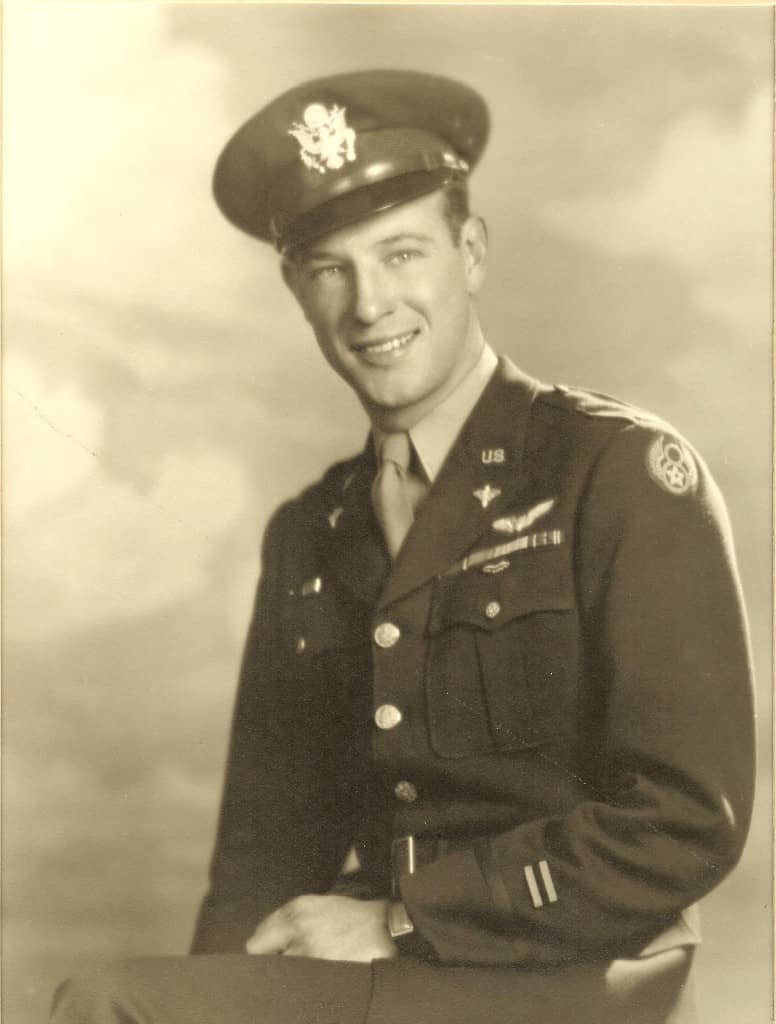
In particular, were two trips arranged by veterinarian Dr. Paul Delahaye who lived in the area where the Susan Ruth was shot down. Dr. Delahaye had formed the Belgian-American Foundation in 1984 to honor and keep alive the memory of the Allied troops who liberated his country from Nazi oppression. In 1988, he invited my parents to attend the dedication of a monument to U.S. soldiers, and in 1989 he invited the living crew members and their wives to attend the dedication of a memorial to Susan Ruth and its crew. It was after these trips that my father began to recall and discuss his wartime experiences.
In 1994, my wife Glenda, sister Nancy, and I accompanied my parents back to Southern Belgium to attend the 50th Anniversary Celebration of the Belgian Liberation. My dad was the honored guest and speaker at numerous events, and we saw several of the houses where he was hidden while missing. It was an amazing and emotional experience that really sparked my interest to learn more about my father and his crew.
In February 2003, The Collings Foundation’s “Wings of Freedom Tour” came to Long Beach, California, and I paid to take a 30-minute ride in the restored B-17 Nine-O-Nine. It was so thrilling to get just a small taste of what it must have been like during the war.
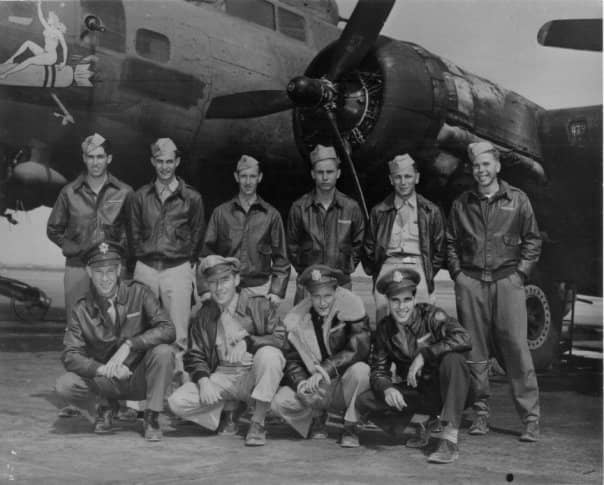
In the spring of 2004, I accompanied my dad to King of Prussia, Pennsylvania to attend the annual AFEES (Air Forces Escape & Evasion Society) Reunion which included a bus trip to Washington, D.C. to visit the World War II Memorial just prior to its formal dedication on May 29. My dad wanted to see it before he died, and it was the last trip he ever took. My parents were unable to travel to the 60th Anniversary of the Belgium Liberation in September 2004, but Glenda and I went to represent them. Again, it was an amazing and humbling experience.
Both my parents died in 2007: my dad, Howard, in April and my mother, Ruth, five short months later in September. After they died, I started going through their war keepsakes that included a plethora of pictures, letters, crew member firsthand accounts, and historical publications written by Dr. Delahaye; all of which I scanned into my computer. Of particular interest were all the letters my Dad wrote to my mother while he was stationed in England that she had kept. I had never read them until then, and it was absolutely mesmerizing “listening” to my father “talk” about his personal experiences.
After 36 years of working in sales for Vision Service Plan (VSP), I retired in August 2009, and my retirement gave me the opportunity to begin deeper research into the history of the Susan Ruth crew. The first thing I did was try to locate relatives of the crew.
Through a variety of sources (Ancestry.com, Obituaries, Facebook, etc.), I was able to find numerous relatives of all the crew members except one. Although it took a lot of searching and a lot of hours, I was gratified whenever I found a relative. I assumed the role of unofficial Susan Ruth historian and began emailing all sorts of information to them; many of whom did not have much knowledge about the Susan Ruth and its crew. Locating these relatives further ignited my enthusiasm for research, and as a result, I became a member of The Mighty Eighth Air Force Museum in Savannah, Georgia, The World War II Museum in New Orleans, Louisiana, the Air Forces Escape & Evasion Society (AFEES), The Eighth Air Force Historical Society, and the 306thBomb Group Association.
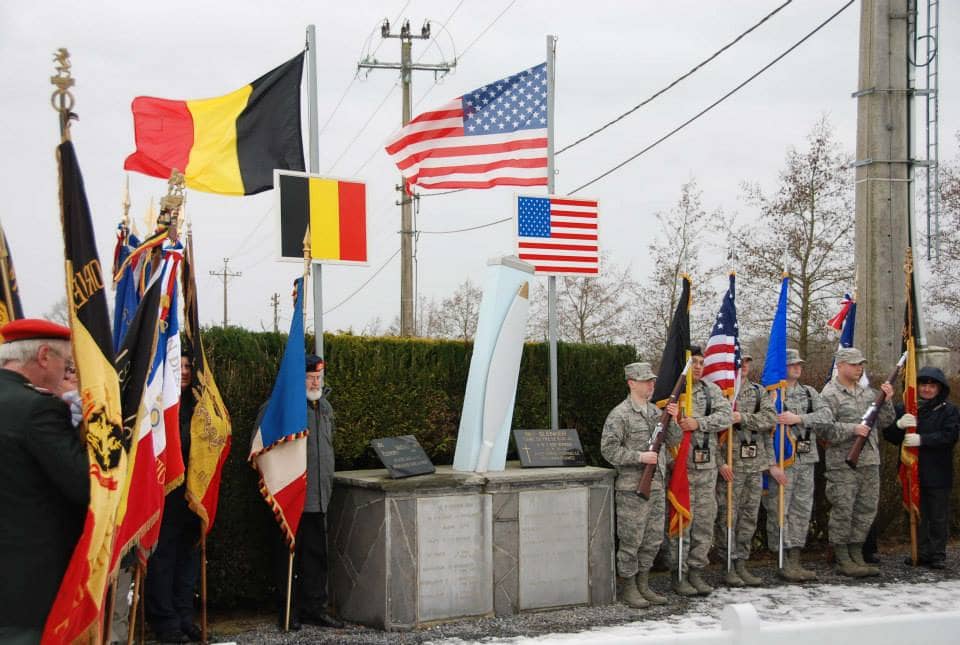
In 2011, the 306th Bomb Group held its annual reunion in San Diego, California, and being that I was retired and it was only 1 ½ hours from my home, I decided to go along with my oldest son, Doug. Later that year, Doug and I attended the AFEES Reunion in San Antonio, Texas, and in 2012 we attended the 306th Bomb Group Reunion in Savannah, Georgia.
Attending the reunions, I was inspired by the stories told by Eighth Air Force veterans and those told by relatives of vets who were no longer living. Listening to them, I thought what my dad and his crew had experienced was even more compelling. With all the reference material I had collected after my retirement, I decided to begin writing the story about my dad and his crew and publish a book.
How I wrote it
After I retired in August 2009, I began to think about pulling together all the information I had about my father’s war experiences. However, it wasn’t until I attended the 306th Bomb Reunion in Savannah, Georgia in the fall of 2012 that I decided to actually do it. Initially, it was just going to be just something for my satisfaction and to give to relatives of my dad’s crew. Once I got started on the project and truly realized what a unique and compelling story it really was, I decided to go all out and publish a professionally done book and offer it to the public. The problem was where and how to start.
I had a foundation from the many stories my father had told me about his experiences and from the two trips I took to Belgium in 1994 for the 50th Anniversary of the Liberation of Belgium and again in 2004 for the 60th. During those trips, I saw the memorial to the B-17 Susan Ruth and its crew, explored the small museum that contains pictures and memorabilia, and visited many locations where the events of many years ago actually took place. Seeing things first hand brought the stories alive and made them personal.
I already had a wealth of information at my disposal with all the keepsakes my parents had retained from the war years. Among these items were:
- all the letters my father had written to my mother while he was stationed in England
- correspondence from the War Department to my mother
- letters from crew members and their relatives
- letters from my father’s Belgian helpers
- my father’s hand written diary
- my father’s military orders and records
- a taped and recorded interview of my father from 2004
- Belgian publications about events that happened during the war
- newspaper articles
- pictures from 1943 and 1944, many of my father and his Belgian helpers
- written and oral accounts by crew members and others
- obituaries of crew members and spouses
- a research publication by Dan Frey
Another invaluable source of information was the material gathered and published by Dr. Paul Delahaye. He was a young boy during the Nazi occupation of Belgium and lived near where the Susan Ruth crashed. In 1984, he formed the Belgian American Foundation to honor and remember the Allied troops who liberated his country when he was just 13 years old. Outside of his veterinarian work, Dr. Delahaye became the local historian and through extensive research and personal interviews with citizens involved in the events, he documented and recorded what took place in that area during the war.
I read many books about the Eighth Air Force and spent hours and hours on the internet doing research. Both were especially helpful in obtaining information about prisoner of war events that bombardier Richard Daniels and flight engineer/top turret gunner Roy Holbert experienced.
Through the 306th Bomb Group website, I obtained many declassified military documents. Among them were: Aircraft Records, Missing Crew Reports, Mission Reports, Squadron Diaries, and Squadron Rosters. I reviewed years and years of 306th Bomb Group newsletters that contain articles and stories written by 306th veterans.
Although all the crew members were deceased, I had gone on a quest to locate their living relatives and was successful with the exception of navigator Robert Benninger. Thankfully, several relatives were helpful and sent me letters, photographs, military documents, newspaper clippings, magazine articles, and oral and written accounts.
There also some wonderful surprises along the way. One was when I received a Facebook message from Anne-Sophie Gaudry in Belgium inquiring if I was related to one Captain Howard Snyder. It turned out her great grandmother, Eva Martin, was one of my father’s helpers who hid him from the Germans! Anne-Sophie and her parents related some incidents involving my father that I never knew about.
While attending a 306th Bomb Reunion, I discovered that one of the attendees, veteran Phil Mundell, had flown his very first combat mission as the ball turret gunner on my dad’s crew! From the 306th membership directory, I determined that a couple other veteran members had flown missions with my dad so I called and talked with them.
Bill Slenker, son of tail gunner, William Slenker, provided me with a copy of an 80 page report prepared by the U.S. War Department War Crimes Office on the investigation concerning the murder of three crew members; George Eike, John Pindroch and Robert Benninger. In it was recorded testimony from people not only knowledgeable about the events but personally involved in them!
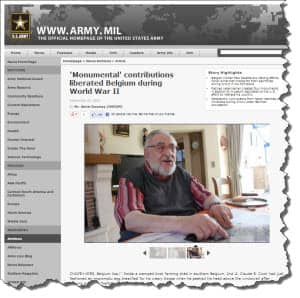
Christel Delahaye, Dr. Delahaye’s daughter, connected me with Jacques Lalot who had investigated some of the events that had taken place in Belgium, had interviewed members of the Belgian underground who participated in those events, and had written a book about his findings. The information Jacques provided me added important facts and helped clarify crucial details.
The final and most amazing surprise was locating the German Luftwaffe pilot who shot down the Susan Ruth! My wife, Glenda, suggested I try to find out. Initially, I thought it would just be a waste of time, thinking “How am I ever going to do that?” Anyway, I said I’d try and did a Google search on “Identifying a Luftwaffe pilot.” I found a couple sites, Axis History Forum and The Luftwaffe Archives and Records Reference Group and posted my inquiry along with the date, time, and location that the Susan Ruth was shot down. Shortly afterwards, I received two replies: one from London and one from Belgium stating that it was probably Hans Berger who is still living! Not only that, but the 90 year old Hans is a translator and speaks English! I obtained Mr. Berger’s email address, and he graciously furnished me with some fascinating information from a completely different perspective.
My book is written in linear or chronological order. It starts with my father’s early years, to his brief time in the Army infantry, and then when he joins the Air Force and goes through pilot training. It continues with the crew’s journey to England, life on the base at Thurleigh, and their combat missions. It describes their plane being shot down and each crew member’s experiences on the ground until the war ends. It ends with the living crew members returning to Belgium for the dedication of the memorial to them and their plane.
Although my father is featured, the book is by no means only about him. My goal was to tell the story about the entire crew of the Susan Ruth and about what each man went through.
While I was writing their story, it became clear to me that it would be necessary to weave a considerable amount of historical information and facts throughout the book. I felt this would put things in context and provide the background to the storyline. Basically, the book is a non-fiction, historical documentary.
BUY on Amazon / Barnes & Noble or where fine books are sold.
Why you need to read SHOT DOWN!
There have been many books written about the air war over Europe during World War II, especially about the Eighth Air Force. I know because I have read a lot of them. Some books are very general in that they are about many bomb groups, many missions, and many combat crews. Others are very narrow in scope which relate the adventures of one man; his time while stationed in England, his combat missions, his time as a prisoner of war, etc. Other books are written about one particular event.
So what makes my book any different and any more interesting?
Shot Down is about the entire crew of the B-17 Susan Ruth and about the unique experiences of each man after their plane was knocked out of the sky over the French/Belgium border. Two men died. Three men were captured and became prisoners of war. Three men evaded the Germans for two months but were betrayed, captured, and shot. Two men evaded capture and were missing in action for seven months. The stories are all different and are all remarkable.
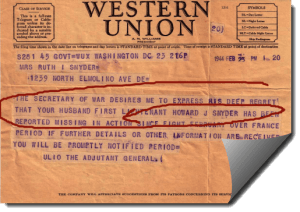 Through personal letters, oral and written accounts, military records, and interviews – all from people who took part of the events that happened 70 years ago, the stories of the crewmen comes alive. So many incredible incidents in such vivid detail are presented that readers will ask: “How does the author know that?” “How could he possibly know that?” “How did he find all this out?”
Through personal letters, oral and written accounts, military records, and interviews – all from people who took part of the events that happened 70 years ago, the stories of the crewmen comes alive. So many incredible incidents in such vivid detail are presented that readers will ask: “How does the author know that?” “How could he possibly know that?” “How did he find all this out?”
However, even before the dramatic battle in the air and the subsequent harrowing events on the ground, the story is informative, insightful, and captivating. Prior to the fateful event, the book outlines the men’s training, their journey to England, their life while stationed there, and their combat missions. Everything is centered around the 306th Bomb Group stationed at Thurleigh, England of which the crew of the Susan Ruth was a part.
To add background and context, many historical facts about the war are entwined throughout the story so that the reader has a feel for and understanding of what was occurring on a broader scale. Thus, the book is a fascinating story about brave individuals, featuring pilot Howard Snyder, set within the compelling events of the war in Europe. You will be given an insider’s seat to the hopes, dreams, and fears of a remarkable group of young airmen and the brave Belgian people that loved cared for and risked their lives for them.
BUY on Amazon / Barnes & Noble / Indiebound or where fine books are sold.
